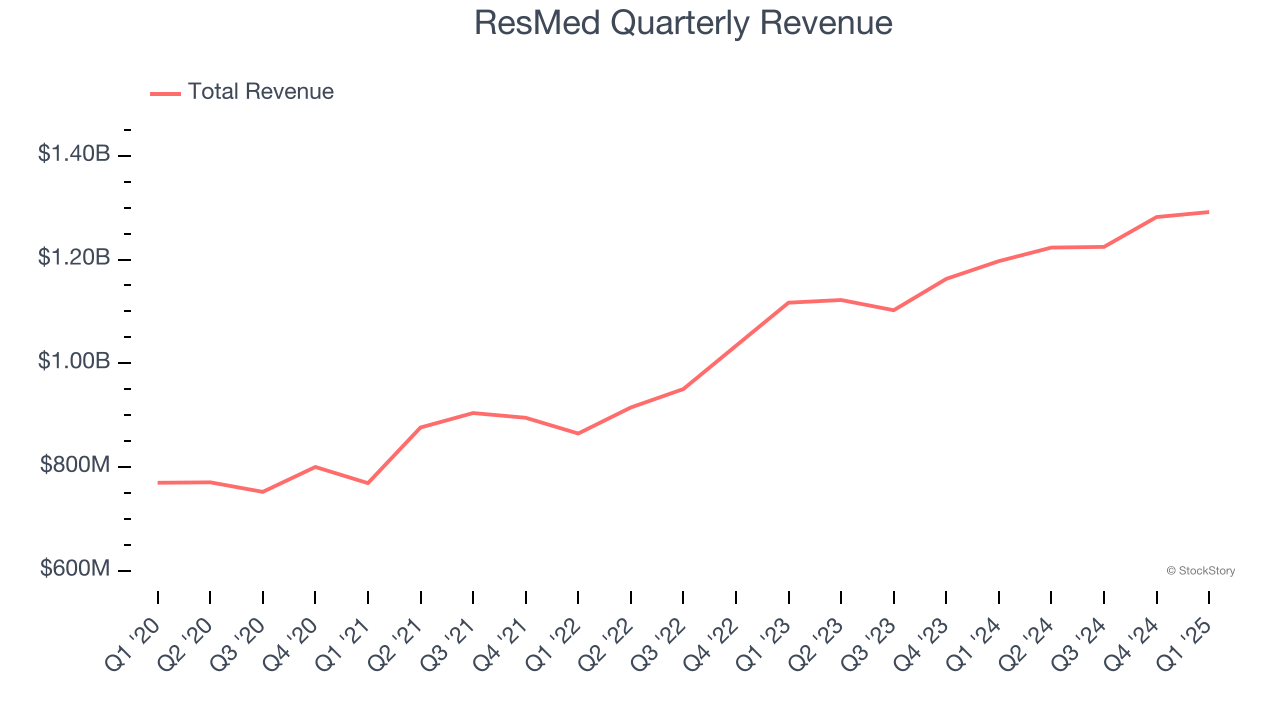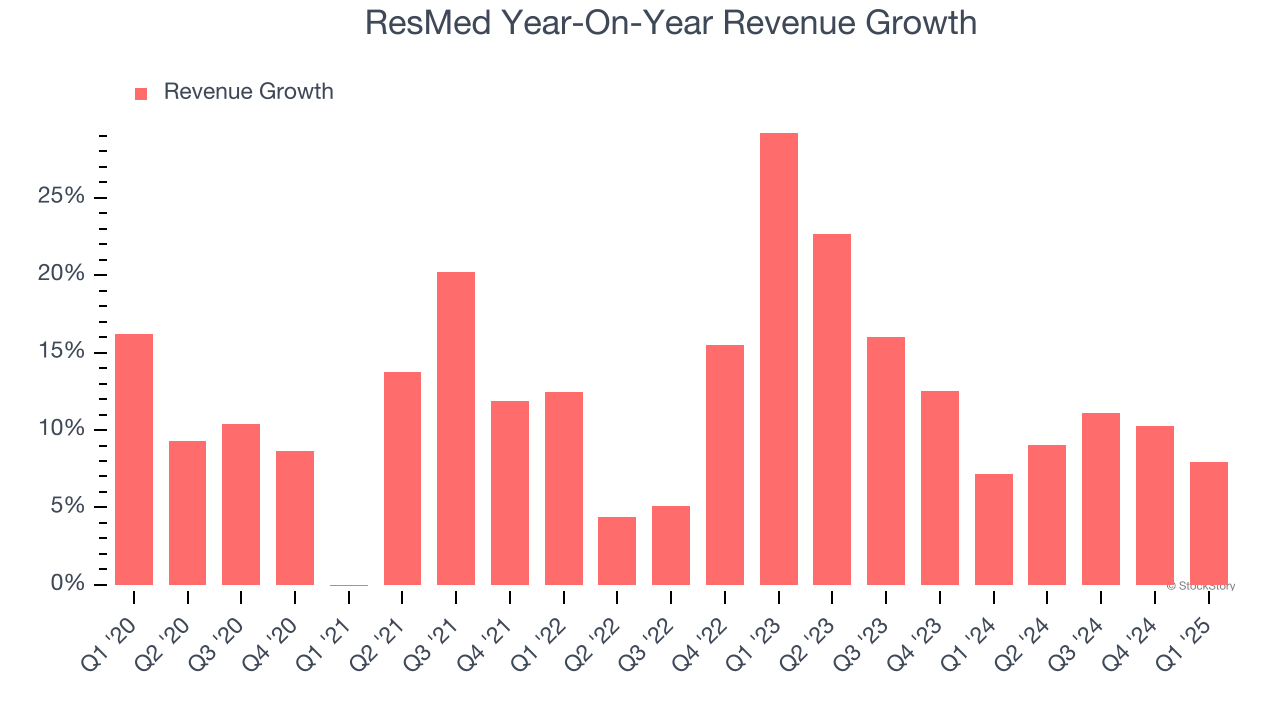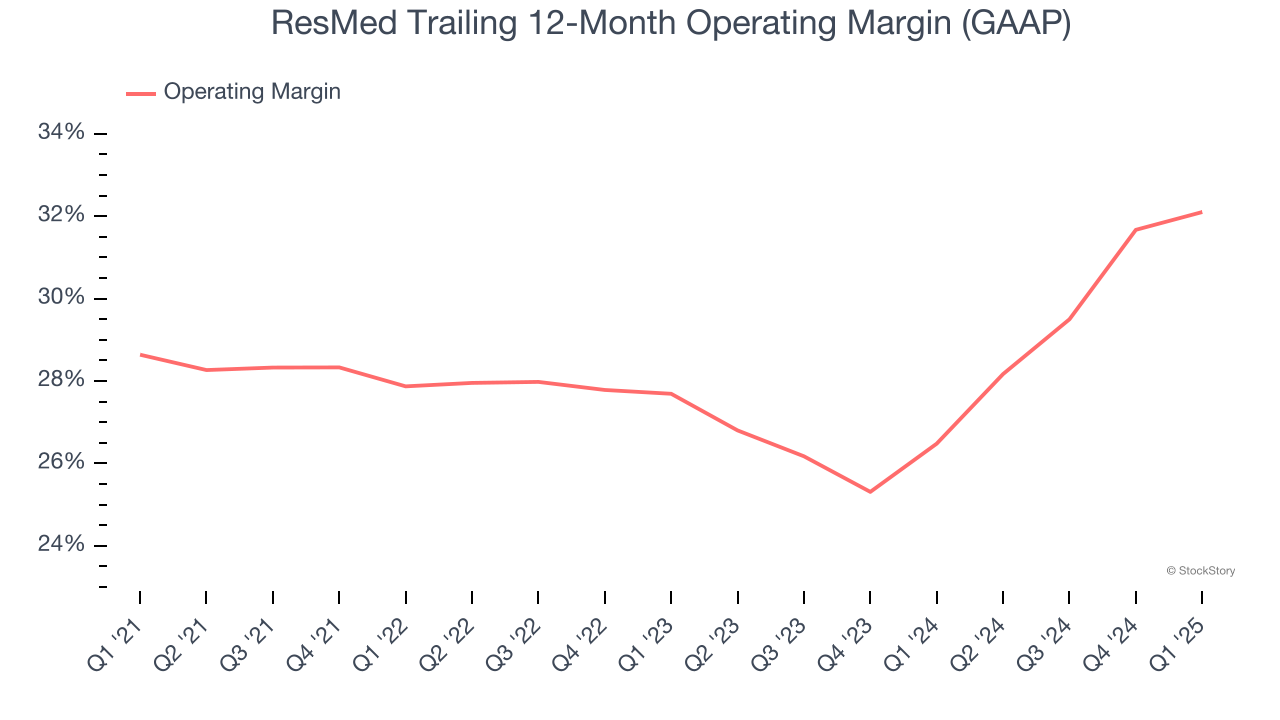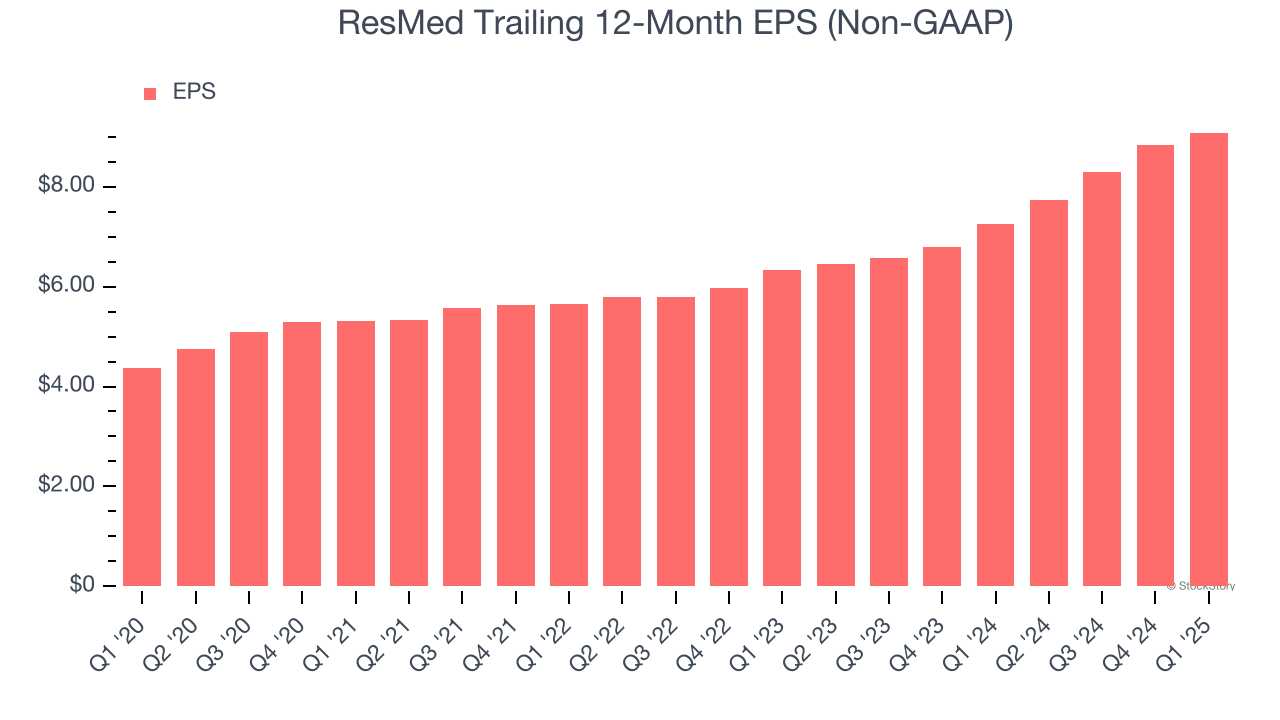
Medical device company ResMed (NYSE: RMD) met Wall Street’s revenue expectations in Q1 CY2025, with sales up 7.9% year on year to $1.29 billion. Its non-GAAP profit of $2.37 per share was in line with analysts’ consensus estimates.
Is now the time to buy ResMed? Find out by accessing our full research report, it’s free.
ResMed (RMD) Q1 CY2025 Highlights:
- Revenue: $1.29 billion vs analyst estimates of $1.29 billion (7.9% year-on-year growth, in line)
- Adjusted EPS: $2.37 vs analyst estimates of $2.36 (in line)
- Adjusted EBITDA: $494.1 million vs analyst estimates of $474.1 million (38.2% margin, 4.2% beat)
- Operating Margin: 33%, up from 31.3% in the same quarter last year
- Free Cash Flow Margin: 43.2%, up from 31.8% in the same quarter last year
- Constant Currency Revenue rose 9% year on year (7% in the same quarter last year)
- Market Capitalization: $31.39 billion
“Our positive fiscal year 2025 performance continued in the third quarter, with strong top-line revenue growth, margin expansion, and double-digit EPS growth resulting from solid customer demand for our best-in-class products and software solutions,” said Resmed’s Chairman and CEO, Mick Farrell.
Company Overview
Founded in 1989 to address the then-underdiagnosed condition of sleep apnea, ResMed (NYSE: RMD) develops cloud-connected medical devices and software solutions that treat sleep apnea, COPD, and other respiratory disorders for home and clinical use.
Patient Monitoring
Patient monitoring companies within the healthcare equipment industry offer devices and technologies that track chronic conditions and support real-time health management, such as continuous glucose monitors (CGMs) and sleep apnea machines. These businesses benefit from recurring revenue from consumables and software subscriptions tied to device sales (razor, razor blade model). The rising prevalence of chronic diseases like diabetes and respiratory disorders due to an aging population as well as growing adoption of digitization are good for the industry. However, these companies face challenges from high R&D costs and reliance on regulatory approvals. Looking ahead, the sector is positioned for growth due to tailwinds like the rising burden of chronic diseases from an aging population, the shift toward value-based care, and increased adoption of digital health solutions. Innovations in AI and machine learning are expected to enhance device accuracy and functionality, improving patient outcomes and driving demand. However, there are headwinds such as pricing pressures as healthcare costs are a key focus, especially in the US. An evolving regulatory landscape and competition from more tech-forward new entrants could present additional challenges.
Sales Growth
Examining a company’s long-term performance can provide clues about its quality. Even a bad business can shine for one or two quarters, but a top-tier one grows for years. Luckily, ResMed’s sales grew at a decent 11.7% compounded annual growth rate over the last five years. Its growth was slightly above the average healthcare company and shows its offerings resonate with customers.

We at StockStory place the most emphasis on long-term growth, but within healthcare, a half-decade historical view may miss recent innovations or disruptive industry trends. ResMed’s annualized revenue growth of 11.8% over the last two years aligns with its five-year trend, suggesting its demand was stable. 
We can dig further into the company’s sales dynamics by analyzing its constant currency revenue, which excludes currency movements that are outside their control and not indicative of demand. Over the last two years, its constant currency sales averaged 12% year-on-year growth. Because this number aligns with its normal revenue growth, we can see that ResMed has properly hedged its foreign currency exposure. 
This quarter, ResMed grew its revenue by 7.9% year on year, and its $1.29 billion of revenue was in line with Wall Street’s estimates.
Looking ahead, sell-side analysts expect revenue to grow 7.5% over the next 12 months, a deceleration versus the last two years. Still, this projection is above the sector average and indicates the market is baking in some success for its newer products and services.
Today’s young investors won’t have read the timeless lessons in Gorilla Game: Picking Winners In High Technology because it was written more than 20 years ago when Microsoft and Apple were first establishing their supremacy. But if we apply the same principles, then enterprise software stocks leveraging their own generative AI capabilities may well be the Gorillas of the future. So, in that spirit, we are excited to present our Special Free Report on a profitable, fast-growing enterprise software stock that is already riding the automation wave and looking to catch the generative AI next.
Operating Margin
Operating margin is one of the best measures of profitability because it tells us how much money a company takes home after subtracting all core expenses, like marketing and R&D.
ResMed has been an efficient company over the last five years. It was one of the more profitable businesses in the healthcare sector, boasting an average operating margin of 28.7%.
Analyzing the trend in its profitability, ResMed’s operating margin rose by 3.5 percentage points over the last five years, as its sales growth gave it operating leverage. The company’s two-year trajectory shows its performance was mostly driven by its recent improvements. These data points are very encouraging and shows momentum is on its side.

In Q1, ResMed generated an operating profit margin of 33%, up 1.7 percentage points year on year. This increase was a welcome development and shows it was more efficient.
Earnings Per Share
We track the long-term change in earnings per share (EPS) for the same reason as long-term revenue growth. Compared to revenue, however, EPS highlights whether a company’s growth is profitable.
ResMed’s EPS grew at an astounding 15.7% compounded annual growth rate over the last five years, higher than its 11.7% annualized revenue growth. This tells us the company became more profitable on a per-share basis as it expanded.

We can take a deeper look into ResMed’s earnings quality to better understand the drivers of its performance. As we mentioned earlier, ResMed’s operating margin expanded by 3.5 percentage points over the last five years. This was the most relevant factor (aside from the revenue impact) behind its higher earnings; taxes and interest expenses can also affect EPS but don’t tell us as much about a company’s fundamentals.
In Q1, ResMed reported EPS at $2.37, up from $2.13 in the same quarter last year. This print was close to analysts’ estimates. Over the next 12 months, Wall Street expects ResMed’s full-year EPS of $9.08 to grow 11.8%.
Key Takeaways from ResMed’s Q1 Results
Aside from the EBITDA beat, we struggled to find many positives in these results. Overall, this was a softer quarter. The stock traded down 4.3% to $205.21 immediately following the results.
So should you invest in ResMed right now? When making that decision, it’s important to consider its valuation, business qualities, as well as what has happened in the latest quarter. We cover that in our actionable full research report which you can read here, it’s free.







